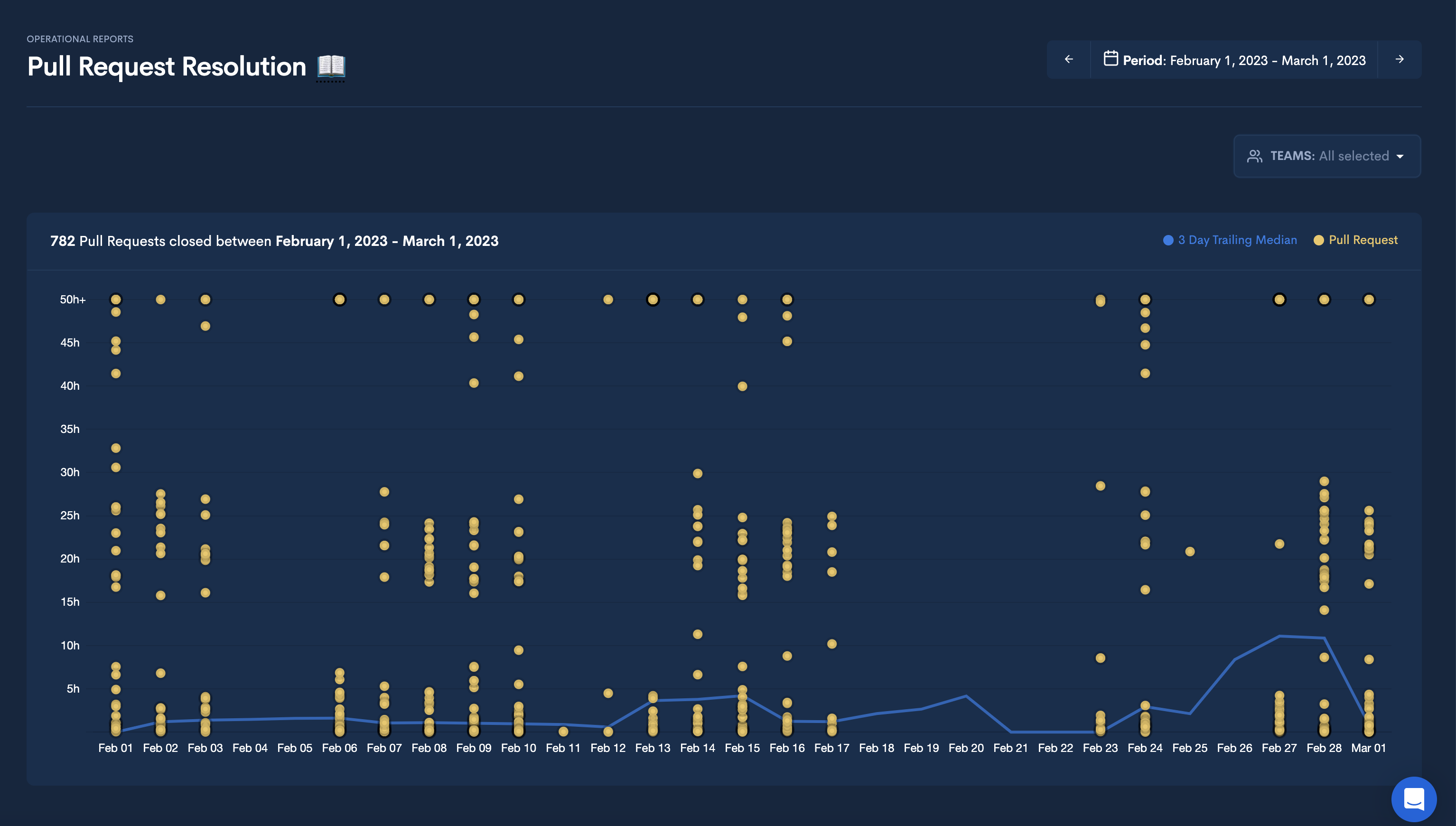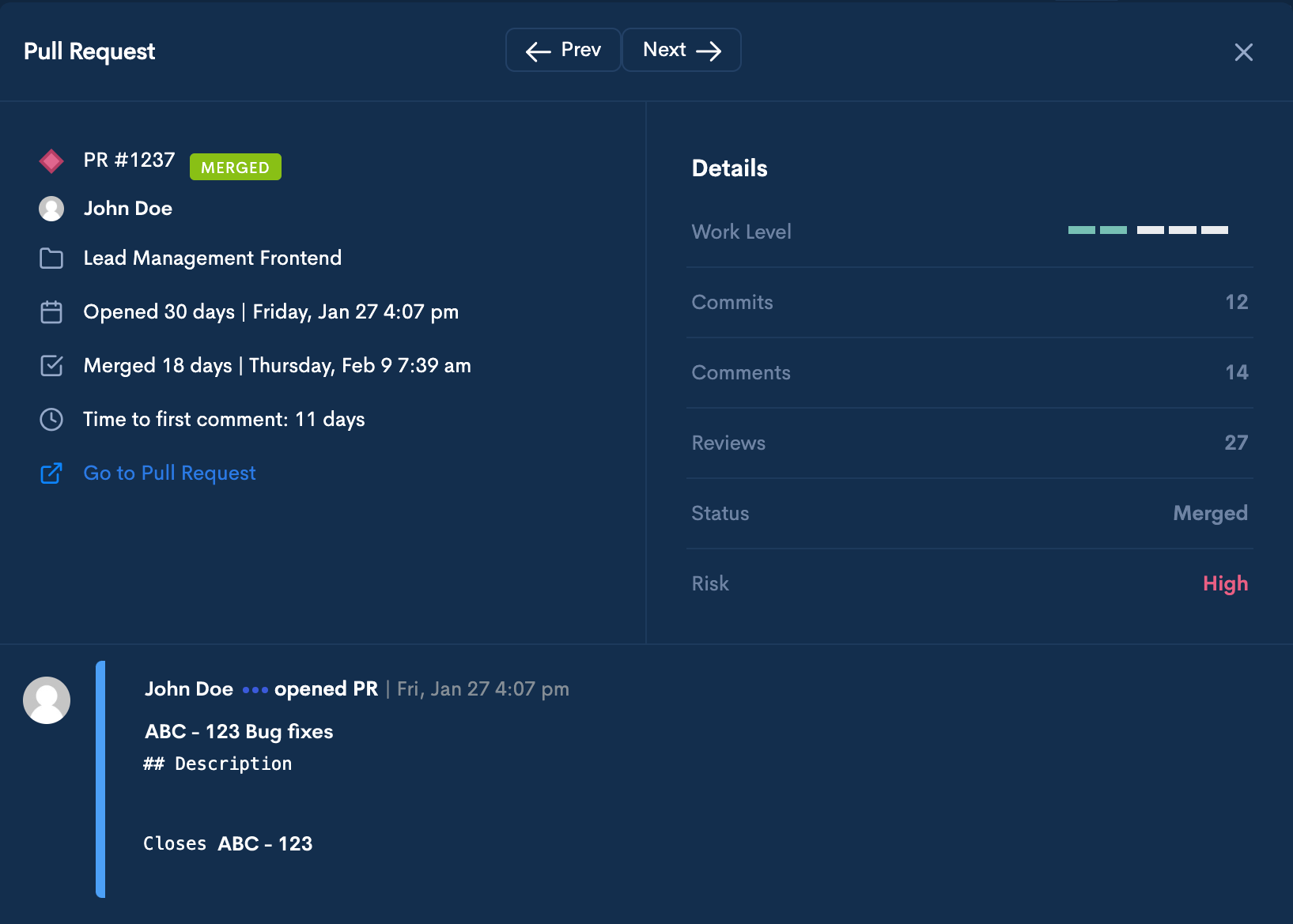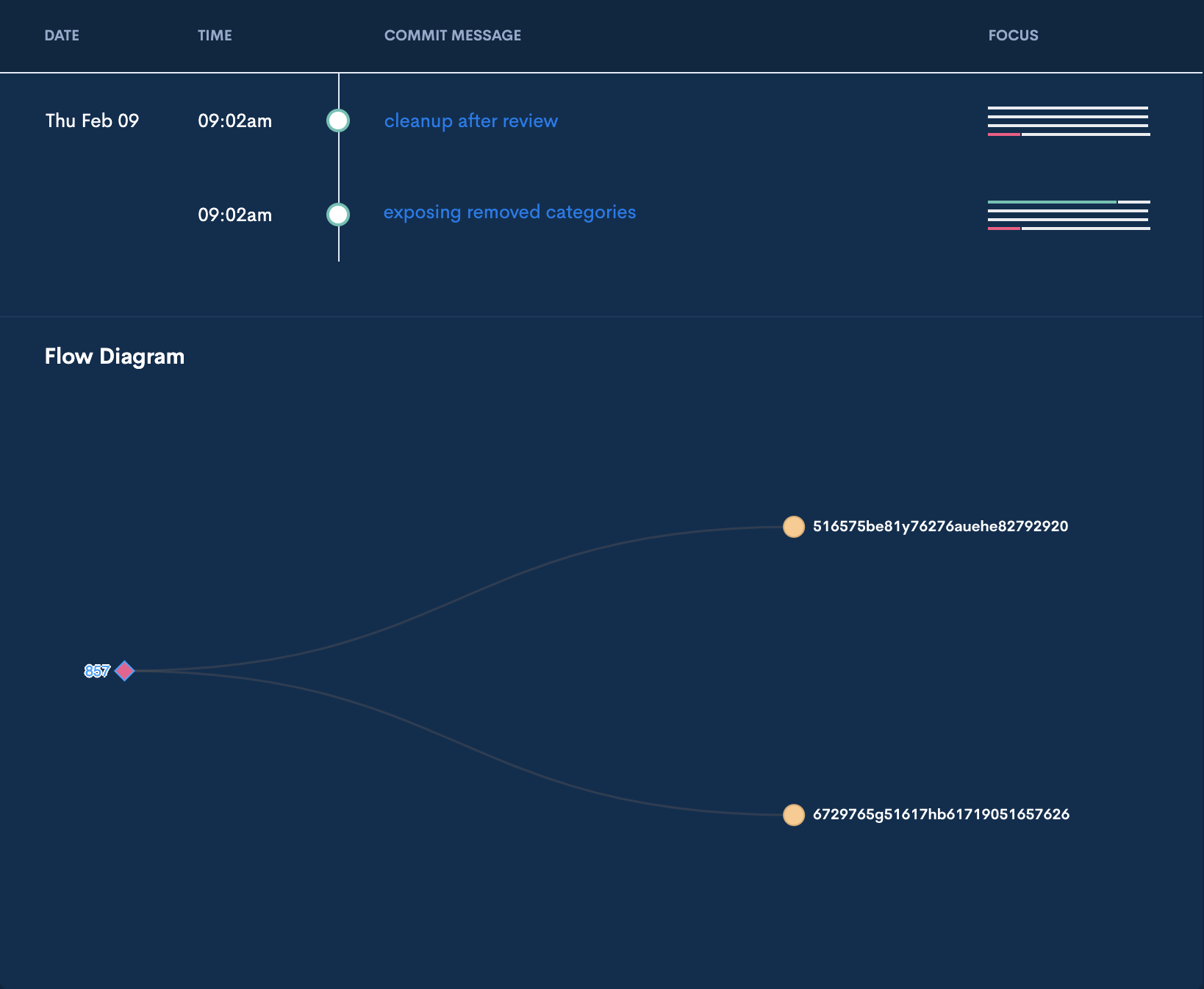Pull Request Resolution
Identify the bottlenecks in your Pull Request cycles over the course of the sprint. Find outliers, and visualize high-level team dynamics and the underlying activities that can contribute to those dynamics.
Code review is a crucial aspect of the software development process that ensures the quality, accuracy, and maintainability of the codebase. However, code review can also be a bottleneck in the delivery process if not managed effectively. Engineering leaders need to monitor and optimize the Pull Request cycle to ensure timely and efficient code review. The Pull Request Resolution feature can help engineering leaders identify bottlenecks in the Pull Request cycle and optimize the review process.

Every circle in the Pull Request Resolution graph represents a Pull Request, and its position indicates how much time it took to be resolved. Once you click on a circle, a modal will appear, containing more details about the specific Pull Request.
The following information is available in the modal:
- The work level
- The number of commits
- Associated commit messages
- The time of execution
- Pull Request reviews
- Pull Request comments
- The time to first comment
- The status of the Pull Request (open, merged, closed, etc.)
- The repository where the work was done
- The Pull Request discussion timeline
- The commit timeline of the Pull Request
- The flow diagram - indicating how commits track back to Pull Requests and tickets


The Pull Request: Close Metrics
The Pull Request Resolution feature focuses on six core Pull Request cycle metrics to identify bottlenecks over the course of the sprint:
- Time to Resolve: A distribution of how many hours it takes to resolve a Pull Request.
- Time to First Comment: A distribution of the number of hours between when a Pull Request is opened and when the first Reviewer comments.
- Follow-on Commits: A distribution of the follow-on commits made on Pull Requests once they are ready for review.
- Reviewers: A distribution of the number of unique reviewers per Pull Request.
- Reviewer Comments: A distribution of the number of reviewer comments per Pull Request.
- Comments: A distribution of the number of comments per unique reviewer.

How to use the Pull Request Resolution report:
The Pull Request Resolution report helps identify bottlenecks in the Pull Request cycle. The report measures six core Pull Request cycle metrics and is designed to help you identify outliers. Outliers are Pull Requests that took an unusually long time to be resolved. To determine why these Pull Requests took so long to resolve, you can work backward from the outliers and analyze common tendencies.
The Pull Request Resolution report can help you see high-level team dynamics and the underlying activities that contribute to those dynamics. You can see how metrics like Time to First Comment, number of Reviewers, and the number of Follow-on Commits are leading indicators of Time to Resolve.
Updated 10 months ago